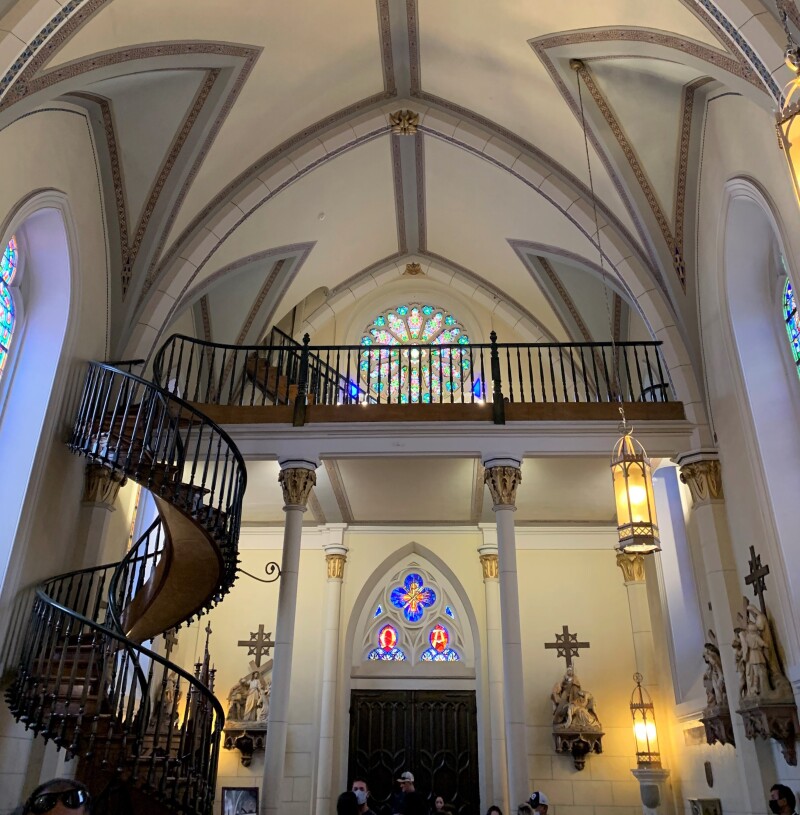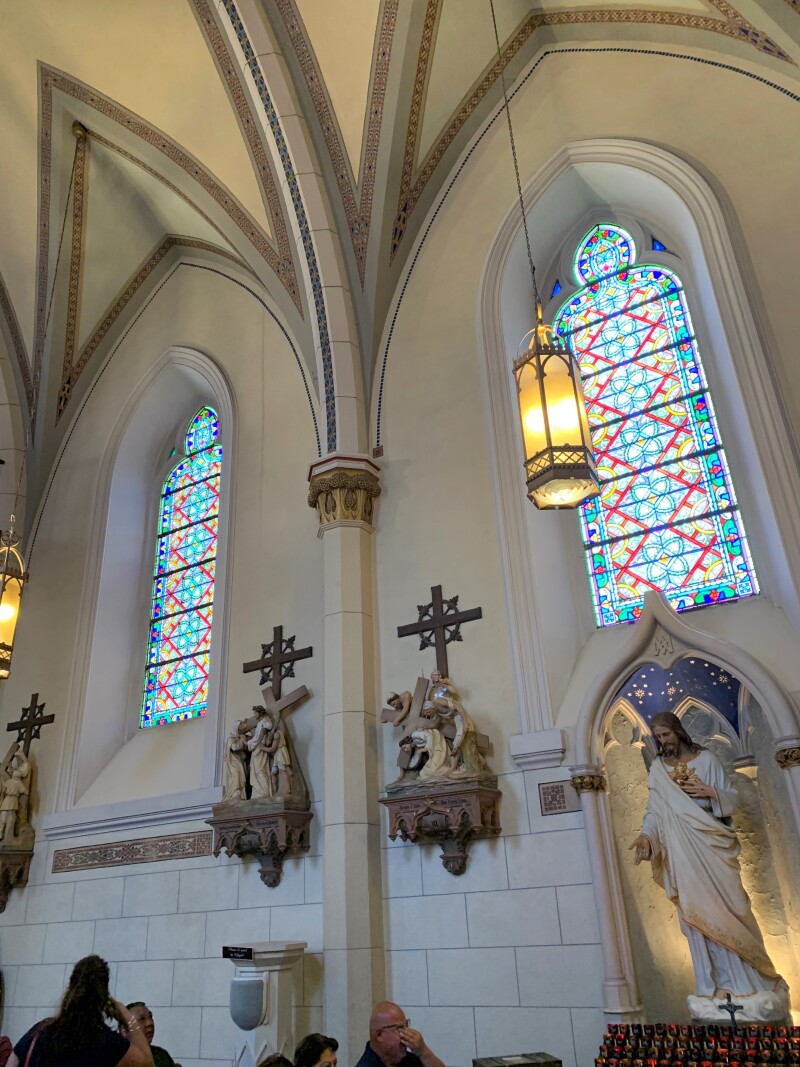
MYSTERY, MIRACLE OR BOTH?
Sheila Grove
03/11/2022

Chapel, Santa Fe, New Mexico. Photo/Sheila Grove
There is a small chapel in downtown Santa Fe, New Mexico, built in the late 1880s that was adjacent to a school for girls run by the Sisters of Loretto. The Archbishop of Santa Fe at that time offered the assistance of an architect working on the nearby St. Francis Cathedral Basilica to assist with the building project. During construction of the chapel, the architect died and the sisters discovered that there were no plans for a staircase to access the choir loft 20 feet above the floor of the chapel.

Photo/Sheila Grove
Because of concerns about the aesthetics of a large staircase in the small chapel and the amount of space that would be lost on the ground floor, the sisters prayed for assistance with finding an acceptable option for accessing the choir loft. On the last day of their novena, a carpenter knocked on their door and said he would build a staircase that would meet their needs. His only condition was that he be alone while he completed the work.
His efforts yielded a spiral staircase in a helix design that was aesthetically appealing and space-conserving. Talk of a miracle began when it appeared that the staircase ─ while quite sturdy ─ had no visible means of support, the wood from which it was constructed was not native to the area and the builder disappeared without being paid.
The sisters were convinced that St. Joseph was the carpenter of what became known as the “miraculous staircase.”
Although the school closed in 1968, the chapel remains. Its intriguing stairway continues to attract visitors, and the chapel is used for weddings. A gift shop funds its maintenance. Its fame has spread through a television movie, a Ripley’s Believe it or Not feature, books and news articles.
Naysayers abound, however, and research has revealed information that some believe diminishes the likelihood that the building of the staircase was a “miracle.” Apparently, the wood is spruce and may have been shipped from France, home to a “secret” group of carpenters. One of those carpenters, François-Jean Rochas, is reported to have lived a reclusive life in the area. Chapel records show a payment of $150 for wood (about $3,000 in today’s funds) to him.
Even snopes.com has weighed in – FALSE is their verdict.
Is that the end of the story? That depends on what qualifies as a miracle.
The Vatican uses a very specific procedure when validating miracles for those considered for canonization. Other than for that very important process, how is a miracle defined?

“It’s a miracle I wasn’t hurt,” “no one thought he would recover,” or “I thought my phone was lost” are examples of frequently heard statements. Events of varying degrees of significance and seriousness yield similar comments.
What these kinds of statements have in common with the staircase phenomenon is their acknowledgement that God is real and acts in our world. The faithful base their lives on that belief. At one time or another, even those who don’t profess to be particularly religious are prompted to ask for intercession or to say a quick thank you to God.
Did St. Joseph really inhabit the body of the carpenter as the sisters believed, or was the miracle that a beautiful egress to the choir loft was built under circumstances no one can verify with certainty?
Or is the miracle that for nearly 150 years, a story about a quaint chapel still inspires travelers to stop in and at least consider the power of prayer.
We should try to remember to ask St. Joseph when we meet him. I hope to. Not a talker, he may just smile at the memory of all the times he simply took care of the needs of people he loved.
-
